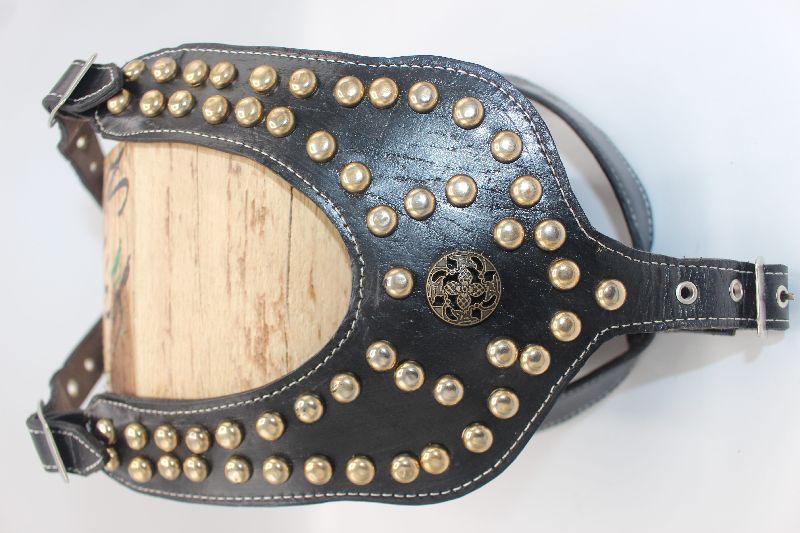No products in the cart.
News
How Do Dog Harnesses Go On?
Dog harnesses can be a tricky thing to put on your dog. There are many different sizes and shapes. It can be difficult to know how to make the harness fit properly. In this article, we’ll look at how to put on a dog harness from start to finish.
What are Dog Harnesses?
A dog harness is a device worn around the dog’s torso to attach a leash, collar, or other restraint to the dog. Dog harnesses come in various styles and sizes, designed to fit different breeds and body types.
There are a few things to consider when choosing a dog harness: the type of restraint you want to use (leash, collar, catch-pole), the size of your dog, and the style of harness you prefer. Most harnesses come with instructions on how to fit them.
When using a leash, it is important to ensure the length is comfortable for you and your dog. Most harnesses come with adjustable straps that allow you to customize the fit. If you are using a collar or catch-pole, it is important to be aware of your dog’s head size and ensure the collar or catch-pole is big enough to fit comfortably.
How to Put on a Dog Harness?
Putting on a dog harness can be tricky, especially if your dog is not used to wearing one. Here are some tips on how to do it:
1- Start lifting your dog’s front legs and putting the harness around his waist. Ensure the straps are tight against his body and that the loops at the back of the harness are resting against his chest.
2- Pull the leash attached to the harness, then tie it in a knot close to your dog’s chest. This will keep you from being able to pull away from yourself.
3- Put your dog’s rear end in the loop at the back of the harness, and then pull his leash tight so that he stands firmly with his back against your leg.
4- Hold onto your dog’s collar and walk around him so that he is facing in the direction you want him to go. Pull on the leash until he starts moving forward, and then release it so that he can walk on his own.
Tips for Proper fit of a Dog Harness
The first step in getting a harness fitted for your dog is to measure their chest around the widest part. Use a piece of string or thin cord and tie it around the chest at the widest point. Take the measurement and write it down.
Next, measure the neck around the widest part. Again, use a piece of string or thin cord and tie it around the neck at the widest point. Take the measurement and write it down.
Finally, measure their waist around the smallest part. This will give you their size in inches (e.g., if your dog is six inches wide around their chest, they would be size Medium).
Once you have measured your dog, you can begin to find a harness that fits well. Make sure to choose one large enough to fit over the chest and neck but not so large as to cause discomfort or restrict movement.
The harness should also fit snugly against your dog’s body, so it does not move or slip off easily. If your dog is small-breed or has a slender body type, make sure to choose a smaller-sized harness than if your dog is larger-breed or has a more muscular body type.
It is also important to ensure that the harness is properly fitted so that it does not create a “jiggle” or bounce when your dog walks.
Putting Harness on a Dog Leash
When attaching a dog leash to a dog, it is important to ensure the leash is snug enough so that the dog cannot pull away. But not so tight that it causes discomfort or restricts their movement. Some tips for putting on a leash include:
1-Attach the leash to the dog’s collar in a comfortable position. The best way to do this is to tie a half hitch around the dog’s neck just below the collar bone. Make sure you can still easily remove the leash in an emergency.
2- Walk your dog around and practice putting on the leash so that they get used to it and are used to walking with it attached. This will also help you avoid accidents when you first have them wearing a harness.
3-If your dog pulls excessively, you may need to put on a tighter leash or use a training collar that attaches behind their neck instead of around them.
4-Never pull a dog on a leash, especially if they are scared or unfamiliar with the situation. This can cause fear and anxiety, which will only worsen the situation.
5-If your dog is misbehaving or pulling on the leash, take them for a short walk in a different part of the house or park before returning them to their regular spot. This will help associate good behavior with being near you rather than struggling against the leash.
Conclusion
A dog harness may be the perfect solution if you’re looking to take your dog out for a walk. But don’t want to leave them tethered to a leash. Harnesses come in different sizes and styles, so finding the right one for your pet is easy. Just ensure that it fits properly and that the fit isn’t too tight or too loose. Otherwise, your dog could become uncomfortable or even injure themselves if they pull too hard on the harness.


